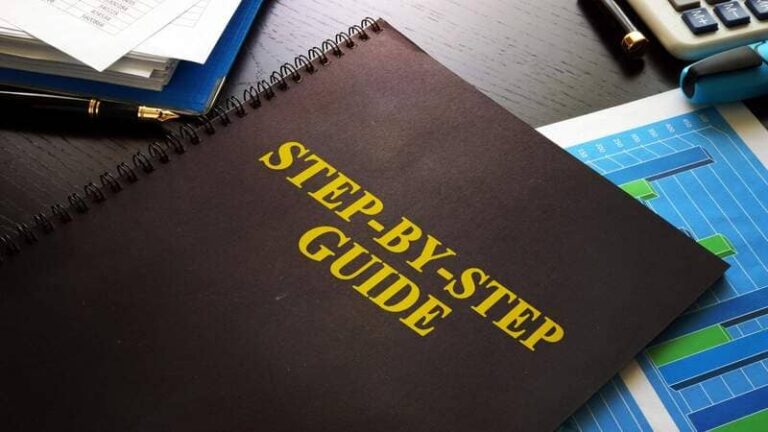To learn English grammar in a step-by-step guide for beginners can be a helpful way to understand the fundamental rules and structures of the language.
Table of Contents
ToggleHere’s a breakdown of key concepts and steps you can follow:
Step 1: Parts of Speech

Start by familiarizing yourself with the different parts of speech in English. It includes nouns, pronouns, verbs, adverbs, adjectives, prepositions, conjunction, and interjection. Learn how each part of speech functions and their roles in sentences and learning English.
Certainly!
Here are the essential parts of speech in English:
English Grammar
Noun:
A word representing a person, place, thing, or idea is called a noun—examples: dog, city, love.
Pronoun:
A pronoun replaces a noun to avoid repetition—examples: he, she, it, they.
Verb:
A word that expresses an action, occurrence, or state of being is known as a verb. Examples: run, eat, sleep.
Adjective:
An adjective modifies a noun or a pronoun—examples: beautiful, happy, tall.
Adverb:
Adverb that describes or modifies a verb, adjective, or adverb. Examples: quickly, very, happily.
Preposition:
A preposition shows relationship between a noun/pronoun and another term in the sentence. Examples: in, on, at, with.
Conjunction:
A word that connects words, phrases, or clauses is called a conjunction. Examples: and, but, or.
Interjection:
A word or phrase that expresses strong emotions or sudden reactions. Examples: wow, oh, oops.
Some words can often function as multiple parts of speech depending on their usage in a sentence. For example, “run” can be a verb (e.g., “I run every morning”) or a noun (e.g., “She went for a run”).
Understanding the functions of these speech parts is essential to learn English grammar, constructing grammatically correct sentences, and expressing ideas clearly in English.
Note: Do you want to be effective in daily conversation?
Then read: Learn how to be effective in Daily Conversation.
Step 2: Sentence Structure
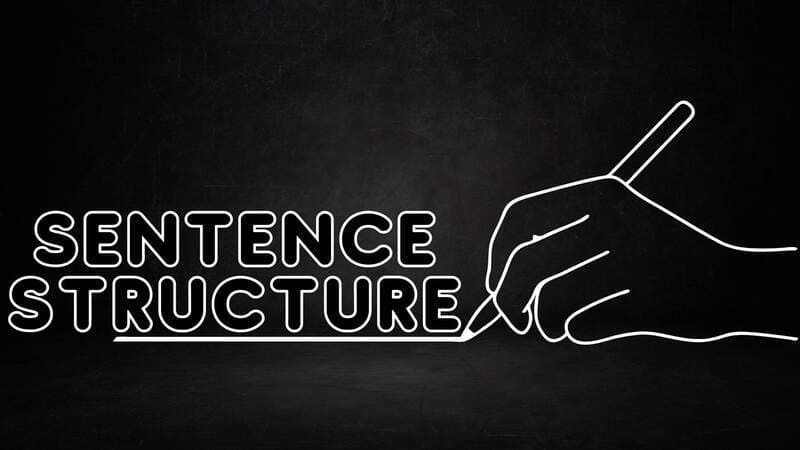
Typically, a sentence consists of a subject (who or what the sentence is about) and a predicate (what is being said about the topic). The predicate usually contains a verb.
Sentence structure refers to how sentences are organized and constructed in English.
A basic sentence in English typically consists of two main components: the subject and the predicate.
Subject:
A sentence’s subject can be a noun or a pronoun that the sentence is about. It tells us who or what is performing the action or being described in the sentence.
Examples:
Sarah baked a cake.
The cat is sleeping.
They went to the park.
Predicate:
The predicate contains the verb or phrase expressing the action or state of being related to the subject. It provides information about what the subject is doing or the qualities attributed to it.
Examples:
Sarah baked a cake.
The cat is sleeping.
They went to the park.
Direct Object:
The direct object receives the verb’s action and answers the question “What?” or “Whom?”
Examples:
Sarah baked a cake. (The cake is the direct object.)
Indirect Object:
The indirect object indicates to whom or for whom the action is performed. It usually comes before the direct thing.
Examples:
Sarah baked her mother a cake. (Her mother is the indirect object.)
Adjective:
An adjective modifies a noun or pronoun, providing more information about it.
Examples:
The tall man walked slowly. (Tall describes the man.)
She wore a beautiful dress. (Beautiful describes the dress.)
Adverb:
An adverb describes or modifies an adjective, a verb, or another adverb, providing more information about how, when, where, or to what extent something happens.
Examples:
He ran quickly. (Quickly describes how he ran.)
She sings very well. (Very describes how well she sings.)
Prepositional Phrase:
A prepositional phrase comprises a preposition, its object, and any modifiers. It provides additional location, time, manner, and other details.
Examples:
He sat on the chair. (On the chair is the prepositional phrase.)
We went to the beach with our friends. (To the beach with our friends is the prepositional phrase.) Understanding sentence structure allows you to construct sentences accurately, understand English grammar rules and effectively convey your intended meaning. Combining different sentence components enable you to create more complex and nuanced sentences in English.
Step 3: Nouns and Pronouns
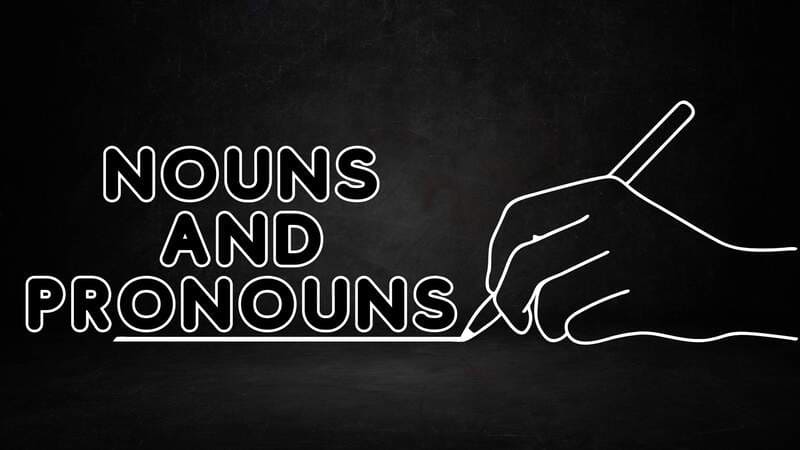
Learn about nouns and pronouns. Nouns are words that represent people, places, things, or ideas. Pronouns, on the other hand, replace nouns to avoid repetition. Understand different types of pronouns such as personal, possessive, demonstrative, and more.
Nouns and pronouns are essential parts of speech in English. They identify and refer to people, places, things, and ideas.
Here’s an overview of nouns and pronouns:
English Grammar
Nouns:
A noun is a word that represents a person, thing, place, or idea. Nouns can be classified into different categories:
Common Nouns:
Common nouns refer to general people, places, things, or ideas. They are capitalized if they begin a sentence—for example, dog, city, or book.
Proper Nouns:
Proper nouns are specific names of capitalized people, places, or organizations. Examples: John, Paris, Coca-Cola.
Concrete Nouns:
Concrete nouns represent tangible objects that can be perceived through the senses—for example, table, car, and flower.
Abstract Nouns:
Abstract nouns represent ideas, concepts, emotions, or qualities that cannot be physically perceived—love, courage, and happiness.
Countable Nouns:
Countable nouns can be counted and have singular and plural forms—for example, apple (singular) and apples (plural).
Uncountable Nouns:
Uncountable nouns are not usually counted and are treated as singular—for example, water and information.
Pronouns:
Pronouns are words that replaces noun to avoid repetition. They help make sentences less repetitive and more concise.
Here are some common types of pronouns:
Personal Pronouns:
Personal pronouns refer to specific things or people. They can be categorized as:
Subject Pronouns:
Used as the subject of a sentence. Examples: I, you, he, she, it, we, they.
Object Pronouns: Used as the object of a preposition or verb. Examples: me, you, him, her, it, us, them.
Possessive Pronouns:
Show ownership or possession—examples: mine, yours, his, hers, its, ours, theirs.
Demonstrative Pronouns:
Demonstrative pronouns point to specific people, places, or things. Examples: this, that, these, those.
Relative Pronouns:
Relative pronouns introduce relative clauses that provide more information about a noun. Examples: who, whom, whose, which, that.
Interrogative Pronouns:
Interrogative pronouns are used to ask questions—for example: who, whom, whose, which, and what.
Reflexive Pronouns:
Reflexive pronouns reflects the subject of a sentence. Examples: myself, yourself, himself, herself, herself, ourselves, ourselves.
Indefinite Pronouns:
Indefinite pronouns refer to nonspecific people or things—for example, someone, anyone, everyone, something, anything, everything.
Understanding nouns and pronouns is crucial for constructing grammatically correct sentences and expressing ideas clearly in English. Proper use of pronouns helps to maintain coherence and avoid unnecessary repetition.
Step 4: Verbs and Tenses

Explore verbs, which express actions or states of being. Learn about different verb tenses, including present, past, and future, as well as progressive and perfect tenses. Understand how to conjugate verbs and match them with the subject of a sentence.
Verbs are crucial in English grammar as they express actions, occurrences, or states of being. They play a central role in constructing sentences.
Here’s an overview of verbs and verb tenses:
English Grammar
Verbs:
A verb is a word that shows an action (e.g., run, eat) or a state of being (e.g., is, exist). Verbs can be classified into different categories:
Action Verbs:
Action verbs indicate physical or mental actions performed by the subject. Examples: walk, talk, think.
Linking Verbs:
Linking verbs connect the subject with additional information or describe a state of being. Examples: be, become, seem. They do not show action but instead, express a relationship or condition.
Auxiliary Verbs (also called “helping verbs”):
Auxiliary verbs are often used with main verbs to create verb phrases or express tense, mood, or voice. Examples: be, have, do.
Modal Verbs:
Modal verbs express possibility, necessity, ability, or permission. Examples: can, could, may, might, must, shall, should, will, would.
Verb Tenses:
Verb tenses indicate the time of an action or state of being. English has several verb tenses, including:
Present Tense:
Used to describe actions happening in the present or general truths. Examples: I walk, he eats.
Past Tense:
Used to describe actions that occurred in the past. Examples: I walked, and he ate.
Future Tense:
It is Used to explain the actions that will happen in the future. Examples: I will walk, he will eat.
Present Continuous/Progressive Tense:
Used to describe ongoing actions happening in the present. Examples: I am walking, and he is eating.
Past Continuous/Progressive Tense:
Used to describe ongoing actions that happened in the past. Examples: I was walking, and he was eating.
Future Continuous/Progressive Tense:
Used to describe ongoing actions that will happen in the future. Examples: I will be walking, and he will be eating.
Present Perfect Tense:
Used to discuss actions that started in the past and have a connection to the present. Examples: I have walked, he has eaten.
Past Perfect Tense:
Used to describe actions that occurred before a specific point in the past. Examples: I had walked, and he had eaten.
Future Perfect Tense:
Used to explain actions that will be completed before a specific point. Examples: I will have walked, he will have eaten.
These are just some of the common verb tenses in English. Each tense has various forms, including simple, continuous, perfect, and perfect continuous, which further specify the timing and nature of the action.
Understanding verb tenses helps convey precise information about the time and continuity of actions, making your communication more detailed and accurate.
Step 5: Adjectives and Adverbs
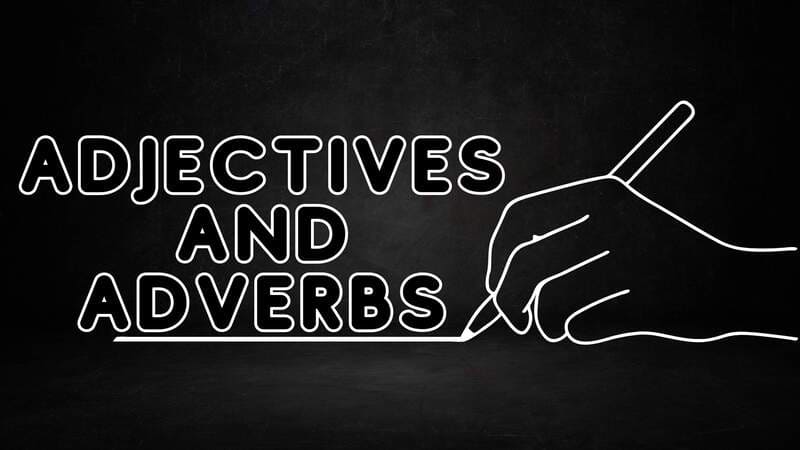
Study adjectives, which describe or modify nouns, and adverbs, which describe or modify verbs, adjectives, or other adverbs. Learn about their placement in sentences and the comparative and superlative forms of adjectives.
Adjectives and adverbs are essential parts of speech that provide additional information and descriptions in English.
Here’s an overview of adjectives and adverbs:
English Grammar
Adjectives:
Adjectives are words that modifies nouns or pronouns, providing more information about their qualities or attributes. They help paint a clearer picture and add detail to the sentence.
Here are some critical points about adjectives:
Placement:
Adjectives usually come before the noun they modify—for example, a beautiful flower or an exciting book.
Degree:
Adjectives can be modified to indicate different degrees of comparison:
Positive Degree:
Used to describe an essential quality or attribute. Example: tall.
Comparative Degree:
Used to compare two things. Example: taller.
Superlative Degree:
Used to compare three or more things. Example: tallest.
Order:
When multiple adjectives describe a noun, they usually follow a specific order based on their function and meaning. The general order is opinion, size, age, shape, color, origin, material, and purpose. Example: a lovely small old round red Italian ceramic bowl.
Adverbs:
Adverbs are words that modify adjectives, verbs, or other adverbs. They provide information about how, when, where, or to what extent an action is performed or quality is described.
Here are some critical points about adverbs:
Types of Adverbs:
Adverbs of Manner:
Describe how an action is performed. Example: She sings beautifully.
Adverbs of Time:
Indicate when an action takes place. Example: We will meet tomorrow.
Adverbs of Place:
Indicate where an action occurs. Example: He looked everywhere.
Adverbs of Frequency:
Describe how often an action is performed. Example: They always arrive late.
Adverbs of Degree:
Modify adjectives or other adverbs to show intensity or extent. Example: It’s scorching today.
Placement:
Adverbs can be placed before the verb, after the verb, or at the beginning or end of a sentence, depending on the emphasis or clarity desired. Example: She quickly ran. / She ran quickly.
Comparison:
Like adjectives, some adverbs have comparative and superlative forms to express degrees of comparison. Example: quickly (positive), faster (comparative), most quickly (superlative).
It’s important to note that some words can function as adjectives and adverbs, depending on their usage in a sentence. For example, “fast” can be an adjective (e.g., a fast car) or an adverb (e.g., she ran fast).
Understanding the use of adjectives and adverbs allows you to provide more descriptive and nuanced information in your sentences, making your communication more vivid and precise.
Step 6: Prepositions

Understand prepositions, which indicate relationships between nouns or pronouns and other words in a sentence. Learn common prepositions and their usage, such as “in,” “on,” “at,” “by,” and “with.”
Prepositions are essential words in English that establish relationships between pronouns, nouns, and other words in a sentence. They often indicate location, direction, time, manner, or purpose.
Here’s an overview of prepositions:
English Grammar
Common Prepositions:
Some frequently used prepositions in English include:
In: The book is in the bag.
On: The keys are on the table.
At: We’ll meet at the park.
By: He came by car.
For: This gift is for you.
With: She went to the movies with her friends.
To: I’m going to the store.
From: He received a letter from his grandmother.
Of: The top floor of the building.
Prepositional Phrases:
Prepositions are often part of prepositional phrases, consisting of the preposition, object, and modifiers. Prepositional phrases add details to sentences.
Examples:
The cat is under the table.
I walked through the park.
She is studying for her exams.
Prepositions of Time:
Prepositions are commonly used to indicate time relationships.
Examples:
On: She was born on Monday.
At: We’ll meet at 6 p.m.
In: He’ll be back in an hour.
Prepositions of Place:
Prepositions are used to indicate location or direction.
Examples:
In: The bird is in the tree.
On: The book is on the shelf.
To: They went to the beach.
Compound Prepositions:
Some prepositions are made up of two or more words.
Examples:
According to: According to the weather forecast, it will rain tomorrow.
In front of The car stopped in front of the house.
Due to: The delay was due to bad weather.
Prepositions in Idiomatic Expressions:
Certain phrases and expressions require specific prepositions.
Examples:
Look at: Look at the beautiful sunset.
Listen to: Listen to the music.
Take care of: Please take care of my plants while I’m away.
Understanding prepositions and their usage is crucial for conveying accurate information about relationships between words and providing additional context in sentences. Using prepositions correctly helps to ensure clarity and precision in your communication.
Step 7: Conjunctions
Explore conjunctions, which connect words, phrases, or clauses in a sentence. Learn about coordinating conjunctions (e.g., “and,” “but,” “or”), subordinating conjunctions (e.g., “although,” “because,” “unless”), and correlative conjunctions (e.g., “either…or,” “neither…nor”).
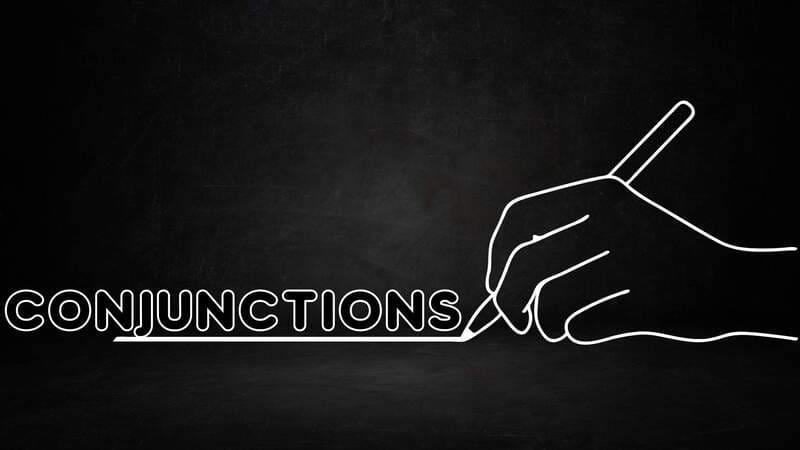
Conjunctions are essential words in English that are used to connect words, phrases, or clauses. They help establish relationships between different sentence parts and express coordination, subordination, and contrast.
Here’s an overview of conjunctions:
English Grammar
Coordinating Conjunctions:
Coordinating conjunctions join words, phrases, or independent clauses of equal importance. The most common coordinating conjunctions are:
And: He likes coffee and tea.
But: She studied hard, but she failed the exam.
Or: Do you want cake or ice cream?
Nor: He neither called nor texted.
For: I bought some groceries, for I was cooking dinner.
Subordinating Conjunctions:
Subordinating conjunctions connect a dependent clause (subordinate clause) to an independent clause (main clause), indicating a relationship of dependence or subordination. Examples of subordinating meetings include:
Although: Although it was raining, we went for a walk.
Because: She stayed home because she was feeling sick.
If: If you study hard, you’ll pass the exam.
While: He listened to music while doing his homework.
Correlative Conjunctions:
Correlative conjunctions work in pairs to connect balanced elements in a sentence.
Some common correlative conjunctions are:
Either…or: You can either come with us or stay here.
Neither…nor: Neither Sarah nor John likes broccoli.
Both…and: She is both intelligent and hardworking.
Not only…but also: He is innovative and funny.
Conjunctive Adverbs:
Conjunctive adverbs function as conjunctions and adverbs, connecting ideas and indicating relationships between clauses.
Examples include:
However: She studied hard; however, she failed the exam.
Therefore: It was raining; therefore, we stayed indoors.
Furthermore: The restaurant has great food and offers excellent service.
Nevertheless: The weather was terrible; we went for a walk.
Conjunctions are crucial in constructing well-structured sentences and expressing relationships between ideas. They allow for smooth transitions and coherent communication.
Appropriate conjunctions can create precise and logical connections in your writing or speech.
Step 8: Sentence Types
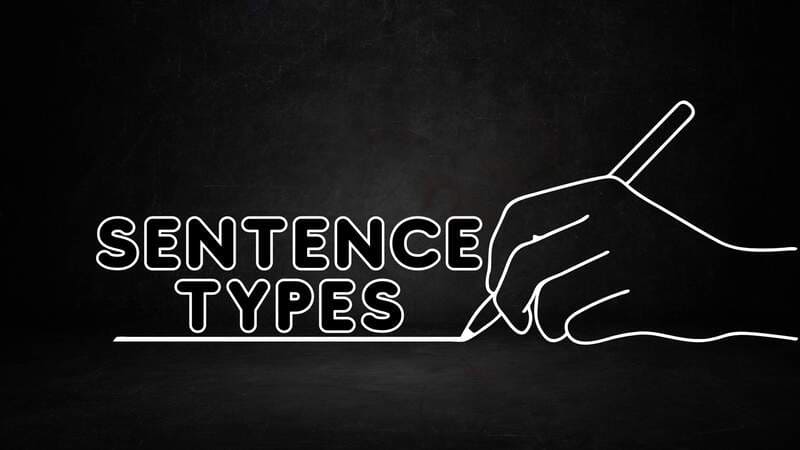
Familiarize yourself with different sentence types, such as declarative (making statements), interrogative (asking questions), imperative (giving commands), and exclamatory (expressing strong emotion). Understand the appropriate word order and punctuation for each type.
In English, there are four main types of sentences: declarative, interrogative, imperative, and exclamatory. Each type serves a different purpose and has a distinct structure.
Here’s an overview of each sentence type:
English Grammar
Declarative Sentences:
Declarative sentences make statements or convey information. They provide facts, opinions, descriptions, or explanations. Declarative sentences end with a period (full stop).
Examples:
“I like to read books.”
“The sun is shining brightly.”
“She is a talented musician.”
Interrogative Sentences:
Interrogative sentences are used to ask questions. They seek information or clarification. Interrogative sentences end with a question mark.
Examples:
“Did you finish your homework?”
“What time is the meeting?”
“Are you coming to the party?”
Imperative Sentences:
Imperative sentences give commands, make requests, or offer instructions. They can be issued directly or politely. Imperative sentences often lack a specific subject and end with a period or an exclamation mark.
Examples:
“Please close the door.”
“Study for your exam.”
“Pass me the salt, please.”
Exclamatory Sentences:
Exclamatory sentences express strong emotions, surprise, excitement, or emphasis. They convey a sense of exclamation or heightened emotion. Exclamatory sentences end with an exclamation mark.
Examples:
“What a beautiful sunset!”
“I can’t believe I won!”
“How delicious this cake is!”
It’s important to note that a sentence can also be a combination of these types. For instance, a sentence can be interrogative and exclamatory, conveying a question with strong emotion or surprise.
Understanding sentence types helps you communicate effectively and convey the appropriate tone and meaning in different contexts. Using the proper sentence type lets you express ideas clearly and engage your audience effectively.
Step 9: Subject-Verb Agreement
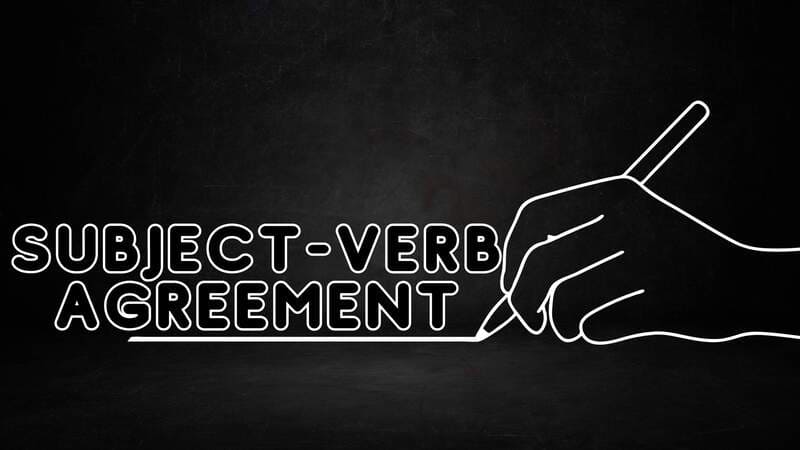
Pay attention to subject-verb agreement. Make sure that subject and verb agree in the sentence in number (singular or plural). For example, “He runs” (special) vs. “They run” (plural).
Subject-verb agreement is a crucial aspect of English grammar. It refers to the agreement or matching of the verb with its subject in terms of number and person.
Here are some key points to remember about subject-verb agreement:
English Grammar
Singular Subjects and Verbs:
A singular subject requires a singular verb. Example: “She sings beautifully.”
Please pay attention to subject-verb agreement when the subject is a singular noun, a pronoun (e.g., he, she, it), or a singular indefinite pronoun (e.g., anyone, somebody).
Plural Subjects and Verbs:
A plural subject requires a plural verb. Example: “They run every morning.”
The verb must also be plural when the subject is a plural noun, a pronoun (e.g., they, we), or a plural indefinite pronoun (e.g., several, many).
Singular/Plural Indicators:
Indicators of quantity or measurement between the subject and the verb do not affect subject-verb agreement. Example: “The group of students is studying.”
The subject-verb agreement is determined by the noun closest to the verb. Example: “The book, along with the pen, is on the table.”
Third-Person Singulars:
In the present tense, the third-person singular subjects (he, she, it, or a singular noun) require a verb form that adds -s or -es to the base form. Example: “He walks to school every day.”
Compound Subjects:
When the subject has two or more nouns joined by “and,” it is usually treated as plural, and the verb should be plural. Example: “Tom and Mary are best friends.”
Collective Nouns:
Collective nouns, referring to a group as a single unit, can take either a singular or plural verb depending on the context and meaning. Example: “The team is practicing” (singular), “The team are arguing” (plural).
Indefinite Pronouns:
Some indefinite pronouns, such as “everyone,” “somebody,” or “each,” are always singular and require a singular verb. Example: “Everyone has their own opinion.”
Other indefinite pronouns, like “both,” “few,” or “several,” are often plural and requires a plural verb. Example: “Several cars were parked outside.”
To maintain grammatical correctness and clarity in your writing or speech, it’s vital to ensure subject-verb agreement. Pay attention to the number and person of the subject and select the appropriate verb form accordingly.
Step 10: Punctuation and Capitalization
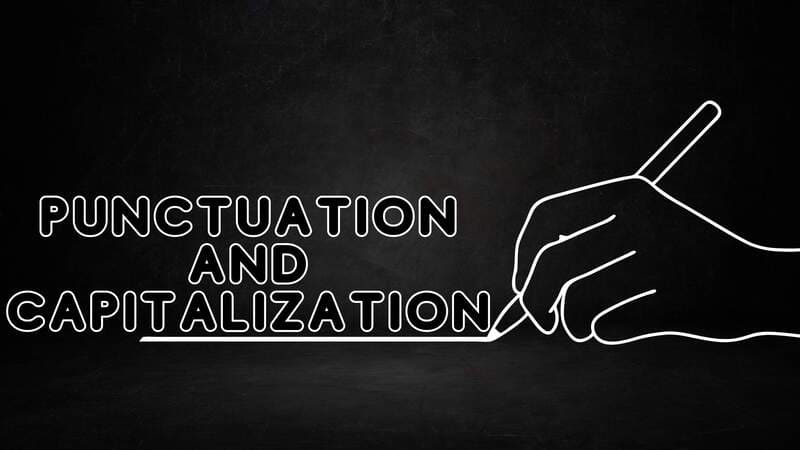
Learn about punctuation marks (e.g., period, comma, question mark) and their sentence usage. Understand capitalization rules for proper nouns, sentence beginnings, and titles.
Punctuation and capitalization are important aspects of written English that help convey meaning, clarify structure, and facilitate comprehension.
Here are some critical guidelines for punctuation and capitalization:
Punctuation:
Period (Full Stop) (.)
Use a period at the end of a declarative or imperative sentence that is not forceful or exclamatory.
Example: “I went to the store.”
Question Mark(?)
Always use a question mark at the end of an interrogative sentence.
Example: “Where are you going?”
Exclamation Mark(!)
Always use an exclamation mark at the end of an exclamatory sentence expressing strong emotion or surprise.
Example: “What a beautiful sunset!”
Comma(,)
Always use commas in order to separate items in a list, separate independent clauses joined by a coordinating conjunction (e.g., and, but, or), or set off introductory or nonessential elements.
Example: “I bought apples, oranges, and bananas.”
Quotation Marks(” “)
Use quotation marks to enclose direct speech or a quotation.
Example: She said, “I’ll be there.”
Apostrophe(‘)
Always use an apostrophe to indicate possession or contraction.
Example: “John’s car” (possession), “don’t” (contraction of “do not”).
Colon(:)
Use a colon to introduce a list, explanation, or example.
Example: “Please bring the following items: pen, paper, and calculator.”
Semicolon(;)
Always use a semicolon to join closely related independent clauses without coordinating conjunction or to separate items in a list of the items that already contain commas.
Example: “She studied hard; she passed the exam.”
CAPITALIZATION:
Capitalize the first letter of Sentences:
The first word of a sentence should always be capitalized.
Proper Nouns:
Names of specific people, places, organizations, or titles should be capitalized.
Example: John, New York City, Microsoft Corporation.
Capitalize Titles:
Capitalize the main words in titles of articles, books, movies, etc., but not short conjunctions, prepositions, or articles unless they are the first or last words of the title.
Examples: “To Kill a Mockingbird,” “The Lord of the Rings.”
Capitalize Days, Months, and Holidays:
Capitalize the names of days, months, and holidays.
Example: Monday, December, Christmas.
Capitalize Proper Adjectives:
Adjectives that are derived from proper nouns should be capitalized.
Examples: French cuisine and Victorian architecture.
It’s important to note that there are additional punctuation marks and rules beyond those mentioned here, and specific situations may require different punctuation or capitalization usage. Consulting a comprehensive grammar guide can provide further guidance on more nuanced aspects of punctuation and capitalization in English learning.
Step 11: Practice and Application
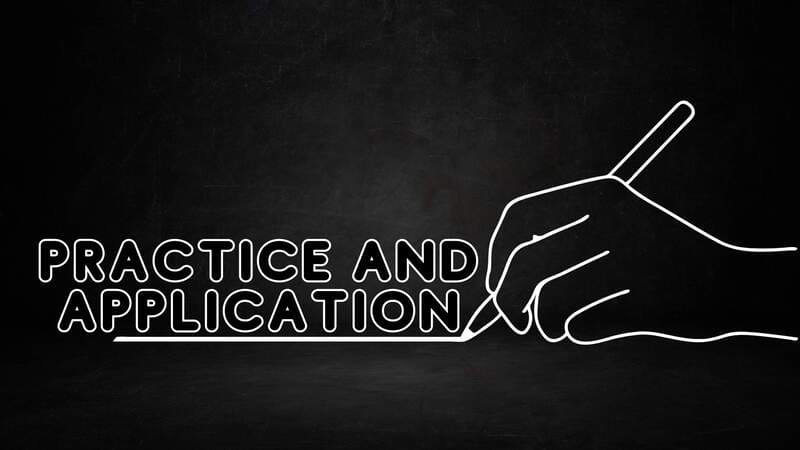
Consistently practice using the concepts you’ve learned. Read English texts, write sentences, and engage in conversations to reinforce your understanding of grammar rules.
Certainly!
Here are a few practice exercises to help you apply your knowledge of grammar concepts:
English Grammar
Exercise 1: Subject-Verb Agreement
Always choose the correct verb form that agrees with the subject in each sentence:
The cat (is/are) sleeping on the sofa.
Sarah (plays/play) the piano beautifully.
They (have/have) gone to the park.
Each of the students (has/have) their desk.
John and Mary (enjoys/enjoy) watching movies together.
Exercise 2: Punctuation
Add appropriate punctuation marks (commas, periods, question marks, etc.) to the following sentences:
what time does the train leave
I need to buy milk, bread, butter, and eggs
she is a talented singer and actress
my favorite color is blue
have you finished your homework yet
Exercise 3: Capitalization
Correct the capitalization errors in the following sentences:
I went to Paris, France, on my summer vacation.
The president of the united states visited the city last week.
my favorite book is “to kill a mockingbird.”
my cousin is studying psychology at Harvard University.
Feel free to attempt these exercises, and I’ll provide the answers and explanations afterward for you to check your work.
Remember that mastering English grammar takes time and practice. Breaking it down into possible steps can help you gradually build a strong foundation. Additionally, referring to reliable grammar resources, such as textbooks or online tutorials, can provide further guidance and examples.

